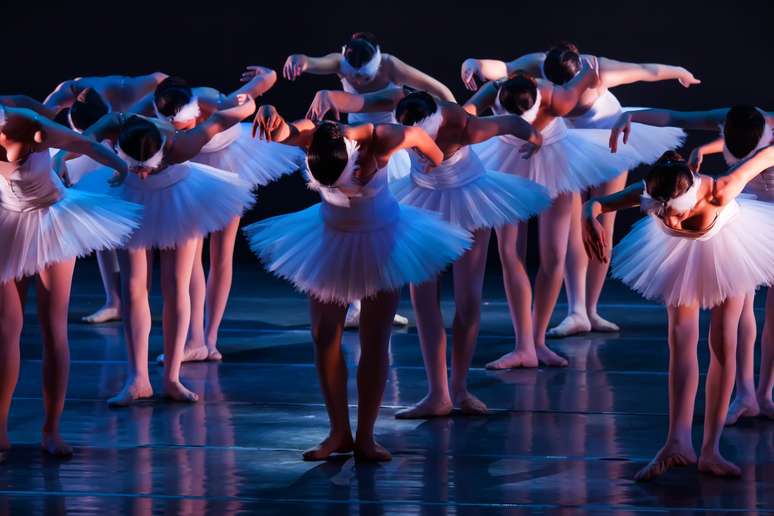Business Lists and Databases Available for Marketing and Research - Direct Mailing Emailing Calling
NAICS Code 711120 - Dance Companies
Government Level - NAICS 6-Digit - Updated to 2022 NAICSBusiness Lists and Databases Available for Marketing and Research
Business List Pricing Tiers
| Quantity of Records | Price Per Record | Estimated Total (Max in Tier) |
|---|---|---|
| 0 - 1,000 | $0.25 | Up to $250 |
| 1,001 - 2,500 | $0.20 | Up to $500 |
| 2,501 - 10,000 | $0.15 | Up to $1,500 |
| 10,001 - 25,000 | $0.12 | Up to $3,000 |
| 25,001 - 50,000 | $0.09 | Up to $4,500 |
| 50,000+ | Contact Us for a Custom Quote | |
What's Included in Every Standard Data Package
- Company Name
- Contact Name (where available)
- Job Title (where available)
- Full Business & Mailing Address
- Business Phone Number
- Industry Codes (Primary and Secondary SIC & NAICS Codes)
- Sales Volume
- Employee Count
- Website (where available)
- Years in Business
- Location Type (HQ, Branch, Subsidiary)
- Modeled Credit Rating
- Public / Private Status
- Latitude / Longitude
- ...and more (Inquire)
Boost Your Data with Verified Email Leads
Enhance your list or opt for a complete 100% verified email list – all for just $0.10 per email!
NAICS Code 711120 Description
This industry comprises companies, groups, or theaters primarily engaged in producing all types of live theatrical dance (e.g., ballet, contemporary dance, folk dance) presentations. Dance companies or groups may or may not operate their own theater or other facility for staging their shows. Source: Census.gov - NAICS 2022 compliant
NAICS Code 711120 - Dance Companies is a final level code of the “Arts, Entertainment, and Recreation” Sector. There are 1,132 companies verified as active in this industry in the USA with an estimated employment of 10,272 people.
Industry Sector
Arts, Entertainment, and RecreationAnnual Payroll
$291,205,000Total Revenue
$831,608,000SBA Size Standard
Annual Revenue Limit of $12,000,000Parent Category - 5-digit Level (less specific)
Marketing: NAICS Codes (8-digit) for Dance Companies
Access In-depth Industry Analysis: Reach out to companies and executives within these industries.
Industry Examples of NAICS 711120
Common types of examples within NAICS Code 711120 - Dance Companies are:
- Ballet companies
- Ballet productions, live theatrical
- Classical dance companies
- Contemporary dance companies
- Dance companies
- Dance productions, live theatrical
- Dance theaters
- Dance troupes
- Folk dance companies
- Interpretive dance companies
- Jazz dance companies
- Modern dance companies
- Tap dance companies
- Theater companies, dance
- Theaters, dance
- Theatrical dance productions, live
Industry Image
Example photo for industry NAICS 711120 - Dance Companies . This image represents an activity or product found in this industry.

Cross-References
Companies
SICCODE.com compiles comprehensive business data and executive contact leads for businesses within NAICS Code 711120 - Dance Companies . Some of the leading and most notable companies are listed below. To order a list of companies within NAICS Code 711120 - Dance Companies for marketing (postal mailing, telemarketing, emailing) or analytics-use, click on the link below to “Buy Business List”. Our data analysts are standing by to assist in your list setup and target marketing.
Industry Executives
Would you like to email executives in NAICS Code 711120 - Dance Companies ? Below are some of the common job titles available to be targeted.
- Business Development
- Chairman
- C-Level
- Director
- Engineering
- Executive Director
- Facilities
- Finance
- Human Resource
- IT
- Manager
- Marketing
- Manufacturing
- Operations
- Owner
- Partner
- President
- Principal
- Purchasing
- Sales
- Vice President
For specific job title targeting, please provide details in the business list request form.
Questions & Answers
-
What is the SBA NAICS 711120 revenue limit?
Businesses with an annual revenue under $12,000,000 are considered small businesses by SBA.
-
How many active businesses operate in NAICS Code 711120?
There are 1,132 verified business locations operating primarily in this industry.
-
What was the total revenue for NAICS Code 711120?
In 2017 the total revenue for Dance Companies was $831,608,000
-
What was the annual payroll for NAICS Code 711120?
In 2017 the annual payroll for Dance Companies was $291,205,000
-
How many people work in NAICS Code 711120?
The number of reported paid employees is 10,272.